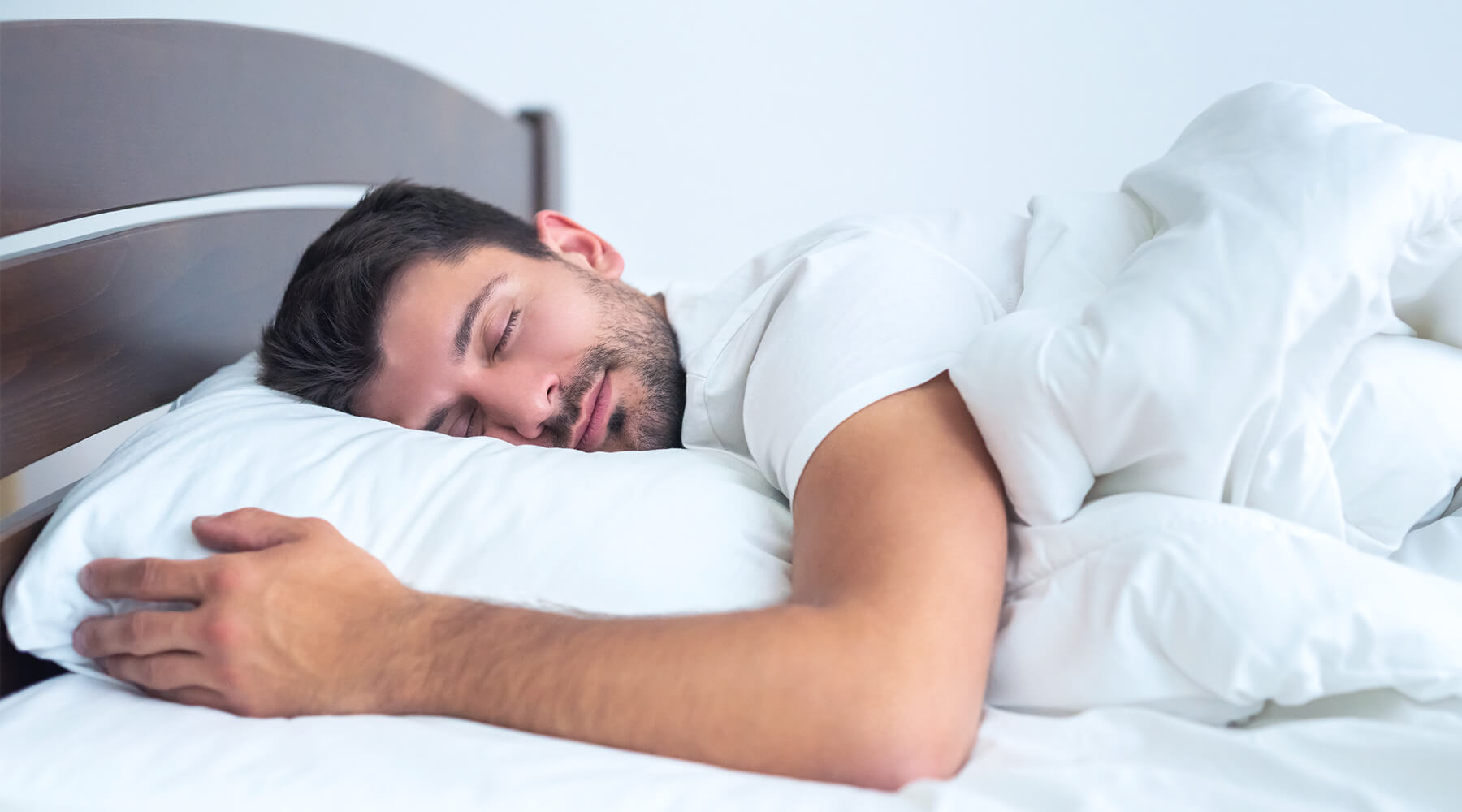
Sleep apnea - breathing interfers in sleep
Sleep apnea describes the repeated, brief cessation of breathing during sleep and not only disturbs our rest at night, but also harms our health and performance during the dayHere you can find out why breathing pauses occur at night and what you can do to get a restful sleep despite your breathing problems.
Table of contents:
- What is sleep apnea?
- What happens with sleep apnea?
- Causes: How does sleep apnea develop?
- Symptoms & consequences of sleep apnea
- Treatment and help for sleep apnea
- Conclusion
Sleep disorders caused by irregularities and breathing disturbances are widespread and impair not only the duration but also the quality of our sleep. More than 100 million people worldwide suffer from sleep apnea and the consequences of the resulting disturbed sleep.
1. What is sleep apnea?
Sleep apnea syndrome is a serious sleep-related breathing disorder and describes the brief cessation of breathing during sleep. This can occur repeatedly, up to several hundred times a night, with brief pauses in breathing lasting from a few seconds to a few minutes, interrupting sleep. Sufferers wake up repeatedly, often unnoticed, and suffer from unrefreshing sleep. Due to the disturbed breathing, sleep apnea is also usually accompanied by pronounced snoring accompanied by.
2. What happens with sleep apnea?
With healthy breathing, air flows through our nose or oropharynx and easily passes through the upper respiratory tract. With sleep apnea, however, the airways are so narrowed or blocked that the resistance is too great, making breathing difficult or even impossible.
The cessation of breathing leads to a drop in the oxygen concentration in the blood, and the organs and brain are not supplied with sufficient oxygen. This puts the body under stress and leads to a so-called arousal, a reaction in the central nervous system, whereupon our brain wakes us up to prevent suffocation during sleep. In this way, the natural sleep structure Interrupted again and again night after night, our sleep no longer provides the much-needed rest.

Snoring vs. sleep apnea
Snoring, while initially harmless, occurs when the air we breathe encounters resistance due to a narrowing of the airways, forcing us to breathe in and out more forcefully. The air then flows through the throat with increased pressure, causing soft tissue (such as the tongue, soft palate, or uvula) to vibrate audibly. If the airways become even more blocked, however, no air can pass through the upper airways at all, and harmful sleep apnea develops.
You can find simple tips against annoying breathing noises and snoring at night in this article.
3. Causes: How does sleep apnea develop?
Depending on the exact cause, a distinction is made between obstructive sleep apnea (OSA) and central sleep apnea (CSA). Obstructive sleep apnea is the most common type of sleep apnea and occurs when the muscles in the upper airway relax during sleep, thus narrowing and blocking the throat. This occurs, for example, through natural muscle relaxation at night, but is also favored by certain risk factors.In addition to age and certain physical characteristics (narrow airways, small lower jaw or large tonsils), these also include pre-existing conditions, obesity, Smoke or drinking alcohol before bedtime.
The cause of central sleep apnea, however, is not a true blockage of the airways and the resulting interrupted airflow, but rather a malfunction of the brain. In central sleep apnea, the brain fails to send control signals to the respiratory muscles during sleep, causing breathing to stop and pause. This form of sleep apnea, however, is less common, affecting only about one in ten people with sleep apnea.
4. Symptoms & consequences of sleep apnea
Untreated sleep apnea impairs quality of life and, according to studies, also shortens overall life expectancy. The inadequate oxygen supply and disruption of the natural sleep architecture lead to severe daytime fatigue, headaches, forgetfulness, concentration problems, and mood swings. Furthermore, the disruption of deep sleep prevents the body and brain from adequately replenishing energy stores, leading to lack of energy and reduced performance.
Frequent awakenings from sleep also place stress on the body and place a significant strain on the cardiovascular and nervous systems. This promotes the development of high blood pressure or diabetes, increases the risk of Cardiovascular diseases and strokes and also the risk of accidents is about three times higher than in people with healthy sleep.
Symptoms of sleep apnea at a glance
Physical consequences | Psychological consequences |
| • Headache • Lack of motivation and energy • Daytime fatigue • Increased risk of strokes and cardiovascular diseases • Higher risk of accidents • High blood pressure • Diabetes | • Difficulty concentrating • Forgetfulness • Nervousness • Mood swings up to depression |
5. Treatment & help against sleep apnea
In obstructive sleep apnea, the goal of treatment is to prevent narrowing and eventual blockage of the upper airways, so that air can pass through the throat and flow smoothly into the lungs even during sleep. The best method for preventing pauses in breathing depends fundamentally on the individual cause. In milder cases, it can help to minimize typical risk factors. For example, avoiding alcohol and smoking, controlling excess weight, and maintaining a healthy sleeping posture with the help of a suitable pillow In more severe cases, the use of special sleep masks or bite splints has proven effective in opening the airways and allowing free breathing during sleep.
Unlike snoring, however, sleep apnea is a serious condition. Anyone suffering from nighttime breathing pauses should therefore consult a doctor and seek professional help to improve their health and sleep in the long term.
6. Conclusion
-
Sleep apnea is a common breathing-related sleep disorder and refers to the repeated occurrence of pauses in breathing during sleep.
-
Sleep apnea disrupts sleep, impairs daily performance and has numerous negative health consequences such as an increased risk of cardiovascular disease, high blood pressure or diabetes.
Best wishes and see you soon!



Leave a comment
This site is protected by hCaptcha and the hCaptcha Privacy Policy and Terms of Service apply.